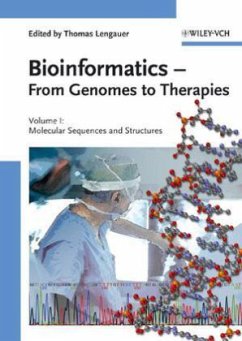Once again, Thomas Lengauer has succeeded in creating a comprehensive and immensely useful bioinformatics resource that meets even the high standards of professionals in the pharmaceutical and medical sector.
By extending the classical application areas of bioinformatics to the most recent approaches in analyzing molecular networks and in predicting molecular function, this handbook serves as a first-stop resource for every bioinformatics user in the life sciences. With contributions by more than 40 of the world's leading bioinformaticians, it is unrivalled in terms of scientific authority and accuracy.
The best single information source available, written by professionals for professionals.
By extending the classical application areas of bioinformatics to the most recent approaches in analyzing molecular networks and in predicting molecular function, this handbook serves as a first-stop resource for every bioinformatics user in the life sciences. With contributions by more than 40 of the world's leading bioinformaticians, it is unrivalled in terms of scientific authority and accuracy.
The best single information source available, written by professionals for professionals.

